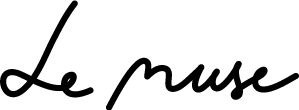What Is Wool?
Wool is a natural, hair-like fiber obtained from animals. Commonly, wool is obtained from sheep, but sometimes it comes from goats, camels, llamas, rabbits, and other animals. This fabric boasts a wide range of characteristics, including better moisture-wicking properties, breathability, durability, better heat retention, and many more. The finest of its kind is obtained from merino sheep.Check out a detailed explanation of wool.
Advantages of Wool
There is a list of the main wool advantages:
- Boasts superior moisture-wicking properties thanks to its breathability
- Feels soft and gentle on the skin
- It’s super easy to take care of
- Stronger than cotton
- Reduces body odor
- Possesses better antibacterial properties
- Machine washable
- Water-resistant
- Better insulator in wet conditions as it keeps your body temperature up compared to cotton
- Dries much faster compared to cotton fabric
- Hypo-allergenic
- Anti-wrinkle
- Offers excellent temperature regulation
- It’s an eco-friendly fabric, as it is a renewable resource and decomposes naturally
You can find out more benefits of wool here.
Disadvantages of Wool
Find the main disadvantages of wool:
- Stains easily
- Sensitive to chemicals above a pH of 9.5 after prolonged exposure
- Dries slowly
- Shrinks with heat and moisture
- It can be itchy
What is cotton?
Cotton is a kind of natural fiber that is obtained from cotton plants. The white, fluffy top part that encases the seeds is what is used to make fabrics. Cotton is soft, breathable, and durable. It is inexpensive to produce compared to wool.
Advantages of cotton
We listed the main advantages of cotton. They are important and can be experienced by wearing cotton clothing.
- Soft, natural, breathable, and cooler than wool
- Comfortable to wear and soft against the skin
- Hypo-allergenic, odor-free, and low maintenance
- Has a high tensile strength, making it durable and less likely to tear or rip
- Unlike wool, cotton is inexpensive
- Can withstand high heat
- Does not irritate skin
- It has absorbent properties
Disadvantages of cotton
There are some disadvantages of cotton. Go through and check.
- Prone to shrinking and stretching
- Wrinkles easily
- Takes a long time to dry
- Highly flammable and burns quickly
- Wears down faster than wool
- Fades over time
Main Differences between Wool and Cotton
When comparing wool and cotton, you’ll notice two key differences. As already mentioned above, wool is obtained from animals, while cotton comes from cotton plants. Secondly, wool is thicker and able to retain heat, while cotton is light and soft. This is why wool is preferred for winter wool clothes and cotton is the best fabric for summer clothes.
We made the comparison of wool and cotton in some important points like warmth, durability, breathability, comfort, water resistance, eco-friendliness, ease of care and price. Go through and consider before choosing the right one.
Warmth
Wool is by far the warmer of the two fibers, as it is thicker, heavier and wool fibers have little air pockets that trap the heat within them. This is why wool is the best fabric for winter clothing while cotton is a better choice for summer clothing.
Durability
Wool is more durable than cotton. Wool fibers can bend over 20,000 times before they break. In comparison, cotton fibers break after 3,000 bends.
Breathability
When you compare cotton vs wool in terms of breathability, both materials have breathable features. Wool offers better breathability in damp weather, while cotton is more breathable in warm weather.
Comfort
In terms of comfort, cotton comes out on top as its fibers are smoother and less coarse. On the other hand, the protein structure of some types of wool fibers is scaled, making them feel itchy and rough against the skin.
Water resistance
Unlike cotton, wool offers better water resistance. Wool has a hydrophobic coating known as lanolin, which prevents the wool fibers from absorbing water too quickly. Moreover, wool can absorb moisture up to 30% of its weight. This gives it excellent moisture-wicking properties and makes it a great fabric for winter clothing. Unlike wool, cotton has a higher absorbency rate, which means it absorbs more water than wool.
Eco-friendliness
Both wool and cotton are more eco-friendly than synthetic materials like polyester, acrylic, rayon, spandex, and nylon. Being natural products, cotton and wool are renewable and biodegradable.
Ease of care
One of cotton’s unique strengths is that it’s much easier to care for than wool fabric because it can be machine washed and dried using regular washing cycles. Wool, on the other hand, is a little bit harder to care for. Wool fabrics can shrink easily if washed in extremely hot water or can be felt if extreme motion happens when the fabrics are wet.
Price
One of the biggest differences between wool vs cotton is the price. In comparison, wool is more expensive than cotton for several reasons. Please find out the main reasons why wool is expensive. Most wool-producing animals can only be shorn once a year, so that limited supply means higher prices. On the other hand, cotton can be grown nearly all year round, creating a vast supply and lower prices.
Merino wool vs cotton
As the name suggests, merino wool is obtained from merino sheep. The notable difference between merino wool and regular wool is that merino wool is really soft, lightweight, very strong, and more elastic.
Merino wool is softer and lighter than cotton and outperforms it when it comes to warmth, moisture-wicking, and temperature regulation. Besides, merino wool requires more gentle handling when it comes to maintenance and care. However, cotton is cheaper than merino wool.
Conclusion
When comparing wool vs cotton, there’s no clear answer as to which fabric is better. Both fabrics have equally good characteristics. Wool is an excellent material for outdoor wear, activewear, and winter clothing. Cotton is great for casual day-to-day wear, sheets, underwear, and warm season clothing. Generally, choosing between cotton vs wool depends on what properties you’re looking for, if you’re wearing the clothing in cold or hot weather, and what activity you’ll be doing in the clothing.





















